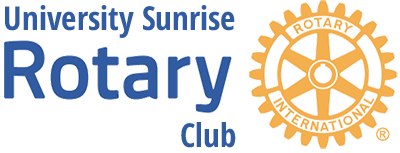Did I read that sign right?
“TOILET OUT OF ORDER. PLEASE USE FLOOR BELOW.”
In a Laundromat:
AUTOMATIC WASHING MACHINES: PLEASE REMOVE ALL YOUR CLOTHES WHEN THE LIGHT GOES OUT.
In a London department store:
BARGAIN BASEMENT UPSTAIRS…
In an office:
WOULD THE PERSON WHO TOOK THE STEP LADDER YESTERDAY PLEASE BRING IT BACK OR FURTHER STEPS WILL BE TAKEN.
In an office:
AFTER TEA BREAK, STAFF SHOULD EMPTY THE TEAPOT AND STAND UPSIDE DOWN ON THE DRAINING BOARD.
Outside a second-hand shop:
WE EXCHANGE ANYTHING – BICYCLES, WASHING MACHINES, ETC. WHY NOT BRING YOUR WIFE ALONG AND GET A WONDERFUL BARGAIN?
Notice in health food shop window:
CLOSED DUE TO ILLNESS…
Spotted in a safari park:
ELEPHANTS, PLEASE STAY IN YOUR CAR.
(I sure hope so.)
Seen during a conference:
FOR ANYONE WHO HAS CHILDREN AND DOESN’T KNOW IT, THERE IS A DAY CARE ON THE 1ST FLOOR.
Notice in a farmer’s field:
THE FARMER ALLOWS WALKERS TO CROSS THE FIELD FOR FREE, BUT THE BULL CHARGES.
Message on a leaflet:
IF YOU CANNOT READ, THIS LEAFLET WILL TELL YOU HOW TO GET LESSONS.
On a repair shop door:
WE CAN REPAIR ANYTHING. (PLEASE KNOCK HARD ON THE DOOR – THE BELL DOESN’T WORK.)
Proofreading is a dying art, wouldn’t you say?
Man Kills Self Before Shooting Wife And Daughter
This one I caught in the SGV Tribune the other day and called the Editorial Room and asked who wrote this. It took two or three readings before the editor realized that what he was reading was impossible!!! They put in a correction the next day.
Something Went Wrong in Jet Crash, Expert Says
Really? Ya’ think?
Police Begin Campaign to Run Down Jaywalkers
Now that’s taking things a bit far!
Panda Mating Fails; Veterinarian Takes Over
What a guy!
Miners Refuse to Work after Death
No-good-for-nothing’ lazy so-and-so’s!
Juvenile Court to Try Shooting Defendant
See if that works better than a fair trial!
War Dims Hope for Peace
I can see where it might have that effect!
If Strike Isn’t Settled Quickly, It May Last Awhile
Ya’ think?!
Cold Wave Linked to Temperatures
Who would have thought!
Enfield (London) Couple Slain; Police Suspect Homicide
They may be on to something!
Red Tape Holds Up New Bridges
You mean there’s something stronger than duct tape?
Man Struck By Lightning: Faces Battery Charge
He probably IS the battery charge!
New Study of Obesity Looks for Larger Test Group
Weren’t they fat enough?!
Astronaut Takes Blame for Gas in Spacecraft
That’s what he gets for eating those beans!
Kids Make Nutritious Snacks
Do they taste like chicken?
Local High School Dropouts Cut in Half
Chainsaw Massacre all over again!
Hospitals are Sued by 7 Foot Doctors
Boy, are they tall!
And the winner is…
Typhoon Rips Through Cemetery; Hundreds Dead
Did I read that right?






